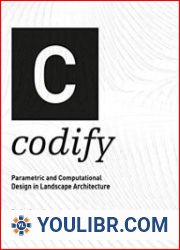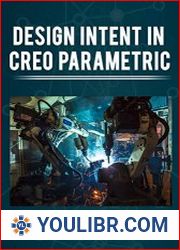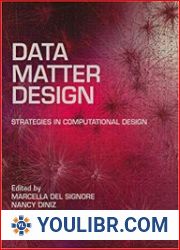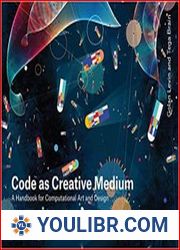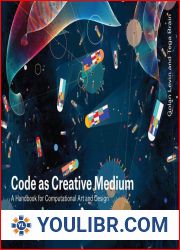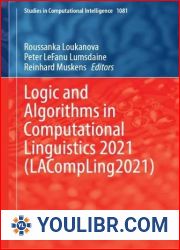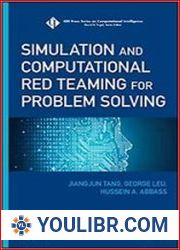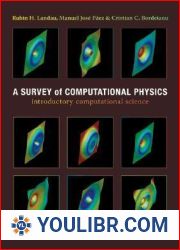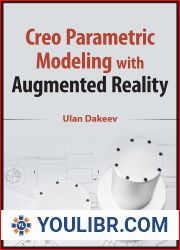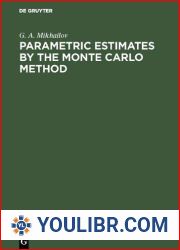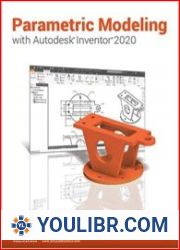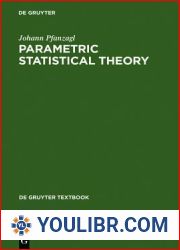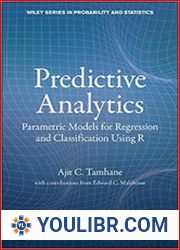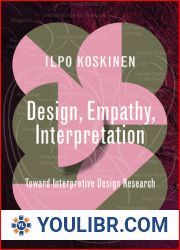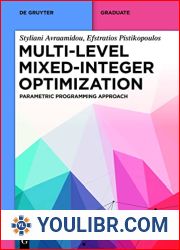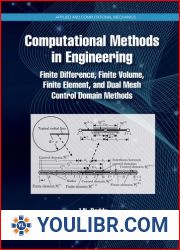
BOOKS - DESIGN AND ARCHITECTURE - Codify Parametric and Computational Design in Lands...

Codify Parametric and Computational Design in Landscape Architecture
Author: Bradley Cantrell and Adam Mekies
Year: 2018
Format: PDF
File size: 30 MB
Language: ENG

Year: 2018
Format: PDF
File size: 30 MB
Language: ENG

The book explores the intersection of parametric and computational design in landscape architecture and examines the role of these techniques in shaping the future of the field. The authors argue that the current state of technology evolution is not only changing the way we think about design but also influencing our understanding of nature and our place within it. They contend that by embracing these new technologies, landscape architects can develop a more nuanced and sophisticated understanding of their work and its impact on the environment. The book begins with an introduction to the basics of parametric and computational design, providing readers with a solid foundation for understanding the concepts presented throughout the text. It then delves into the various applications of these techniques in landscape architecture, including the use of algorithms, artificial intelligence, and machine learning. The authors discuss how these tools can be used to analyze and represent complex systems, as well as to simulate and predict the behavior of landscapes over time. Throughout the book, the authors emphasize the importance of interdisciplinary collaboration and the need for landscape architects to engage with other fields such as ecology, geography, and computer science in order to fully realize the potential of parametric and computational design.
Книга исследует пересечение параметрического и вычислительного дизайна в ландшафтной архитектуре и исследует роль этих методов в формировании будущего области. Авторы утверждают, что текущее состояние эволюции технологий не только меняет наше представление о дизайне, но и влияет на наше понимание природы и нашего места в ней. Они утверждают, что, используя эти новые технологии, ландшафтные архитекторы могут развить более тонкое и сложное понимание своей работы и ее влияния на окружающую среду. Книга начинается с введения в основы параметрического и вычислительного проектирования, предоставляя читателям прочную основу для понимания концепций, представленных по всему тексту. Затем он углубляется в различные применения этих методов в ландшафтной архитектуре, включая использование алгоритмов, искусственного интеллекта и машинного обучения. Авторы обсуждают, как эти инструменты можно использовать для анализа и представления сложных систем, а также для моделирования и прогнозирования поведения ландшафтов во времени. На протяжении всей книги авторы подчеркивают важность междисциплинарного сотрудничества и необходимость для ландшафтных архитекторов взаимодействовать с другими областями, такими как экология, география и информатика, чтобы полностью реализовать потенциал параметрического и вычислительного проектирования.
livre explore l'intersection entre la conception paramétrique et la conception informatique dans l'architecture paysagère et explore le rôle de ces méthodes dans la formation du futur domaine. s auteurs affirment que l'état actuel de l'évolution de la technologie ne change pas seulement notre conception du design, mais affecte également notre compréhension de la nature et de notre place en elle. Ils affirment qu'en utilisant ces nouvelles technologies, les architectes paysagistes peuvent développer une compréhension plus subtile et plus complexe de leur travail et de son impact sur l'environnement. livre commence par une introduction aux bases de la conception paramétrique et informatique, offrant aux lecteurs une base solide pour comprendre les concepts présentés dans tout le texte. Il s'intéresse ensuite aux différentes applications de ces techniques dans l'architecture paysagère, y compris l'utilisation d'algorithmes, l'intelligence artificielle et l'apprentissage automatique. s auteurs discutent de la façon dont ces outils peuvent être utilisés pour analyser et présenter des systèmes complexes, ainsi que pour simuler et prédire le comportement des paysages dans le temps. Tout au long du livre, les auteurs soulignent l'importance de la collaboration interdisciplinaire et la nécessité pour les architectes paysagistes d'interagir avec d'autres domaines tels que l'écologie, la géographie et l'informatique afin de réaliser pleinement le potentiel de la conception paramétrique et informatique.
libro explora la intersección entre el diseño paramétrico y computacional en la arquitectura paisajística y explora el papel de estas técnicas en la formación del campo futuro. autores sostienen que el estado actual de la evolución de la tecnología no sólo cambia nuestra concepción del diseño, sino que también influye en nuestra comprensión de la naturaleza y nuestro lugar en ella. Argumentan que al utilizar estas nuevas tecnologías, los arquitectos del paisaje pueden desarrollar una comprensión más sutil y compleja de su trabajo y su impacto en el medio ambiente. libro comienza con una introducción a los fundamentos del diseño paramétrico y computacional, proporcionando a los lectores una base sólida para entender los conceptos presentados en todo el texto. Luego profundiza en las diferentes aplicaciones de estas técnicas en la arquitectura del paisaje, incluyendo el uso de algoritmos, inteligencia artificial y aprendizaje automático. autores discuten cómo estas herramientas pueden ser utilizadas para analizar y representar sistemas complejos, así como para modelar y predecir el comportamiento de los paisajes en el tiempo. A lo largo del libro, los autores destacan la importancia de la colaboración multidisciplinar y la necesidad de que los arquitectos paisajistas interactúen con otras áreas como la ecología, la geografía y la informática para realizar plenamente el potencial del diseño paramétrico y computacional.
O livro explora a interseção entre o design paramétrico e o design computacional na arquitetura paisagística e explora o papel destes métodos na formação de uma área futura. Os autores afirmam que o estado atual da evolução da tecnologia não apenas altera nossa visão do design, mas também afeta nossa compreensão da natureza e do nosso lugar nela. Eles afirmam que, usando essas novas tecnologias, os arquitetos paisagistas podem desenvolver uma compreensão mais fina e complexa do seu trabalho e do seu impacto ambiental. O livro começa com a introdução nos fundamentos do projeto paramétrico e computacional, fornecendo aos leitores uma base sólida para compreender os conceitos apresentados em todo o texto. Depois, aprofundou-se em várias aplicações dessas técnicas na arquitetura paisagística, incluindo o uso de algoritmos, inteligência artificial e aprendizagem de máquinas. Os autores discutem como essas ferramentas podem ser usadas para analisar e apresentar sistemas complexos e para modelar e prever o comportamento das paisagens no tempo. Ao longo do livro, os autores destacam a importância da cooperação interdisciplinar e a necessidade de os arquitetos paisagistas interagirem com outras áreas, tais como ecologia, geografia e informática, para realizar plenamente o potencial de engenharia paramétrica e computacional.
Il libro esamina l'intersezione tra design parametrico e computazionale nell'architettura paesaggistica e il ruolo di questi metodi nella formazione del futuro. Gli autori sostengono che lo stato attuale dell'evoluzione della tecnologia non solo cambia la nostra visione del design, ma influisce anche sulla nostra comprensione della natura e del nostro luogo in essa. Sostengono che, utilizzando queste nuove tecnologie, gli architetti paesaggistici possono sviluppare una comprensione più sottile e complessa del loro lavoro e del suo impatto sull'ambiente. Il libro inizia con l'introduzione alla progettazione parametrica e computazionale, fornendo ai lettori una base solida per comprendere i concetti presentati in tutto il testo. Poi si approfondisce in diverse applicazioni di questi metodi nell'architettura paesaggistica, tra cui l'uso di algoritmi, intelligenza artificiale e apprendimento automatico. Gli autori discutono di come questi strumenti possano essere utilizzati per analizzare e rappresentare sistemi complessi e per simulare e predire i comportamenti dei paesaggi nel tempo. Durante tutto il libro, gli autori sottolineano l'importanza della collaborazione interdisciplinare e la necessità per gli architetti paesaggistici di interagire con altre aree, come l'ambiente, la geografia e l'informatica, per realizzare pienamente il potenziale della progettazione parametrica e informatica.
Das Buch untersucht die Schnittmenge von parametrischer und rechnerischer Gestaltung in der Landschaftsarchitektur und untersucht die Rolle dieser Methoden bei der Gestaltung der Zukunft des Feldes. Die Autoren argumentieren, dass der aktuelle Stand der Technologieentwicklung nicht nur unser Verständnis von Design verändert, sondern auch unser Verständnis der Natur und unseres Platzes darin beeinflusst. e argumentieren, dass Landschaftsarchitekten durch den Einsatz dieser neuen Technologien ein subtileres und komplexeres Verständnis ihrer Arbeit und ihrer Auswirkungen auf die Umwelt entwickeln können. Das Buch beginnt mit einer Einführung in die Grundlagen des parametrischen und rechnerischen Designs und bietet den sern eine solide Grundlage, um die im gesamten Text vorgestellten Konzepte zu verstehen. Anschließend geht er auf die verschiedenen Anwendungen dieser Techniken in der Landschaftsarchitektur ein, einschließlich des Einsatzes von Algorithmen, künstlicher Intelligenz und maschinellem rnen. Die Autoren diskutieren, wie diese Werkzeuge verwendet werden können, um komplexe Systeme zu analysieren und darzustellen sowie das Verhalten von Landschaften im Laufe der Zeit zu modellieren und vorherzusagen. Während des gesamten Buches betonen die Autoren die Bedeutung der interdisziplinären Zusammenarbeit und die Notwendigkeit für Landschaftsarchitekten, sich mit anderen Bereichen wie Ökologie, Geographie und Informatik auseinanderzusetzen, um das Potenzial der parametrischen und rechnerischen Gestaltung voll auszuschöpfen.
Książka bada skrzyżowanie parametrycznego i obliczeniowego projektu w architekturze krajobrazu i bada rolę tych metod w kształtowaniu przyszłości pola. Autorzy twierdzą, że obecny stan ewolucji technologii nie tylko zmienia nasze zrozumienie projektowania, ale także wpływa na nasze zrozumienie natury i naszego miejsca w niej. Twierdzą, że dzięki zastosowaniu tych nowych technologii architekci krajobrazu mogą rozwinąć bardziej niuansowane i złożone zrozumienie ich pracy i jej wpływu na środowisko. Książka rozpoczyna się od wprowadzenia do podstaw konstrukcji parametrycznej i obliczeniowej, zapewniając czytelnikom solidne podstawy do zrozumienia koncepcji prezentowanych w całym tekście. Następnie zagłębia się w różne zastosowania tych technik w architekturze krajobrazu, w tym wykorzystanie algorytmów, sztucznej inteligencji i uczenia maszynowego. Autorzy omawiają, jak te narzędzia mogą być wykorzystywane do analizy i prezentacji złożonych systemów oraz do modelowania i przewidywania zachowań krajobrazów w czasie. W książce autorzy podkreślają znaczenie interdyscyplinarnej współpracy oraz potrzebę interakcji architektów krajobrazu z innymi dziedzinami, takimi jak ekologia, geografia i informatyka, aby zrealizować pełny potencjał projektowania parametrycznego i obliczeniowego.
הספר חוקר את הצומת של עיצוב פרמטרי וחישובי באדריכלות נוף ובוחן את תפקידן של שיטות אלה בעיצוב עתיד השדה. המחברים טוענים שהמצב הנוכחי של התפתחות הטכנולוגיה לא רק משנה את הבנתנו לגבי עיצוב, אלא גם משפיע על הבנתנו את הטבע ואת מקומנו בו. הם טוענים שעל ידי שימוש בטכנולוגיות חדשות אלה, אדריכלי נוף יכולים לפתח הבנה יותר מגוונת ומורכבת של עבודתם והשפעתה על הסביבה. הספר מתחיל בהקדמה ליסודות העיצוב הפרמטרי והחישובי, ומספק לקוראים יסוד מוצק להבנת המושגים המוצגים לאורך הטקסט. לאחר מכן הוא מתעמק ביישומים שונים של שיטות אלה בארכיטקטורת נוף, כולל שימוש באלגוריתמים, בינה מלאכותית ולימוד מכונה. המחברים דנים כיצד ניתן להשתמש בכלים אלה כדי לנתח ולהציג מערכות מורכבות, ולדגמן ולחזות את התנהגות הנופים לאורך זמן. לאורך הספר מדגישים המחברים את החשיבות של שיתוף פעולה בין-תחומי והצורך באדריכלי נוף לקיים אינטראקציה עם תחומים אחרים כגון אקולוגיה, גאוגרפיה ומדעי המחשב כדי לממש את מלוא הפוטנציאל של עיצוב פרמטרי וחישובי.''
Kitap, peyzaj mimarlığında parametrik ve hesaplamalı tasarımın kesişimini araştırıyor ve bu yöntemlerin alanın geleceğini şekillendirmedeki rolünü araştırıyor. Yazarlar, teknolojinin mevcut evriminin sadece tasarım anlayışımızı değiştirmekle kalmayıp, aynı zamanda doğa anlayışımızı ve içindeki yerimizi de etkilediğini savunuyorlar. Bu yeni teknolojileri kullanarak, peyzaj mimarlarının çalışmaları ve çevre üzerindeki etkileri hakkında daha ayrıntılı ve karmaşık bir anlayış geliştirebileceklerini savunuyorlar. Kitap, parametrik ve hesaplamalı tasarımın temellerine bir giriş ile başlar ve okuyuculara metin boyunca sunulan kavramları anlamak için sağlam bir temel sağlar. Daha sonra algoritmaların kullanımı, yapay zeka ve makine öğrenimi de dahil olmak üzere peyzaj mimarisinde bu tekniklerin çeşitli uygulamalarını araştırıyor. Yazarlar, bu araçların karmaşık sistemleri analiz etmek ve sunmak ve manzaraların zaman içindeki davranışlarını modellemek ve tahmin etmek için nasıl kullanılabileceğini tartışmaktadır. Kitap boyunca, yazarlar disiplinlerarası işbirliğinin önemini ve peyzaj mimarlarının parametrik ve hesaplamalı tasarımın tam potansiyelini gerçekleştirmek için ekoloji, coğrafya ve bilgisayar bilimi gibi diğer alanlarla etkileşime girme ihtiyacını vurgulamaktadır.
يستكشف الكتاب تقاطع التصميم البارامتري والحسابي في بنية المناظر الطبيعية ويستكشف دور هذه الأساليب في تشكيل مستقبل المجال. يجادل المؤلفون بأن الحالة الحالية للتطور التكنولوجي لا تغير فهمنا للتصميم فحسب، بل تؤثر أيضًا على فهمنا للطبيعة ومكانتنا فيها. يجادلون بأنه باستخدام هذه التقنيات الجديدة، يمكن لمهندسي المناظر الطبيعية تطوير فهم أكثر دقة وتعقيدًا لعملهم وتأثيره على البيئة. يبدأ الكتاب بمقدمة لأساسيات التصميم البارامتري والحسابي، مما يوفر للقراء أساسًا صلبًا لفهم المفاهيم المقدمة في جميع أنحاء النص. ثم يتعمق في تطبيقات مختلفة لهذه التقنيات في بنية المناظر الطبيعية، بما في ذلك استخدام الخوارزميات والذكاء الاصطناعي والتعلم الآلي. يناقش المؤلفون كيف يمكن استخدام هذه الأدوات لتحليل وتقديم الأنظمة المعقدة، ولنمذجة سلوك المناظر الطبيعية والتنبؤ به بمرور الوقت. في جميع أنحاء الكتاب، أكد المؤلفون على أهمية التعاون متعدد التخصصات والحاجة إلى تفاعل مهندسي المناظر الطبيعية مع مجالات أخرى مثل البيئة والجغرافيا وعلوم الكمبيوتر لتحقيق الإمكانات الكاملة للتصميم الحسابي والحسابي.
이 책은 조경에서 파라 메트릭과 계산 디자인의 교차점을 탐구하고 현장의 미래를 형성하는 데있어 이러한 방법의 역할을 탐구합니다. 저자들은 현재 기술의 진화 상태가 디자인에 대한 이해를 변화시킬뿐만 아니라 자연과 그 위치에 대한 이해에도 영향을 미친다고 주장한다. 그들은 이러한 새로운 기술을 사용함으로써 조경 건축가가 자신의 작업과 환경에 미치는 영향에 대한보다 미묘하고 복잡한 이해를 개발할 수 있다고 주장합니 이 책은 파라 메트릭 및 계산 디자인의 기본 사항에 대한 소개로 시작하여 독자들에게 텍스트 전체에 제시된 개념을 이해하기위한 견고한 토대를 제공합니다. 그런 다음 알고리즘, 인공 지능 및 머신 러닝 사용을 포함하여 조경 아키텍처에서 이러한 기술의 다양한 응용 분야를 탐구합니다. 저자는 이러한 도구를 사용하여 복잡한 시스템을 분석 및 제시하고 시간이 지남에 따라 풍경의 동작을 모델링하고 예측하는 방법에 대해 논의합 이 책 전체에서 저자들은 학제 간 협력의 중요성과 조경 건축가가 생태, 지리 및 컴퓨터 과학과 같은 다른 분야와 상호 작용하여 파라 메트릭 및 계산 설계의 모든 잠재력을 실현할 필요성을 강조합니다.
ランドスケープアーキテクチャにおけるパラメトリック設計と計算設計の交差点を探り、これらの手法がフィールドの未来を形作る役割を探る。著者たちは、テクノロジーの進化の現状は、デザインに対する理解を変えるだけでなく、自然やその中の私たちの居場所に対する理解にも影響を及ぼしていると主張している。ランドスケープアーキテクトは、これらの新しい技術を使用することで、自分の仕事と環境への影響についてより微妙で複雑な理解を深めることができると主張しています。この本は、パラメトリックと計算設計の基本についての紹介から始まり、読者にテキスト全体で提示された概念を理解するための確かな基礎を提供します。その後、アルゴリズム、人工知能、機械学習など、ランドスケープアーキテクチャにおけるこれらの技術の様々な応用を掘り下げます。著者たちは、これらのツールを用いて複雑なシステムを分析および提示し、時間の経過とともにランドスケープの挙動をモデル化および予測する方法について議論している。本書を通じて、ランドスケープアーキテクトがエコロジー、地理学、コンピュータサイエンスなどの他の分野と対話し、パラメトリック設計と計算設計の可能性を最大限に引き出す必要性を強調している。
本書探討了景觀建築中參數和計算設計的交集,並探討了這些技術在塑造未來領域中的作用。作者認為,技術發展的現狀不僅改變了我們對設計的看法,而且還影響了我們對自然的理解以及我們在設計中的地位。他們認為,通過使用這些新技術,景觀設計師可以對其工作及其對環境的影響產生更微妙和復雜的理解。本書首先介紹了參數和計算設計的基礎,為讀者提供了了解整個文本中提出的概念的堅實基礎。然後,他深入研究了這些技術在景觀建築中的各種應用,包括算法,人工智能和機器學習的使用。作者討論了如何將這些工具用於分析和表示復雜系統,以及模擬和預測隨時間變化的景觀行為。在整個書中,作者強調了跨學科合作的重要性,以及景觀設計師需要與生態,地理和計算機科學等其他領域進行互動,以充分發揮參數和計算設計的潛力。







